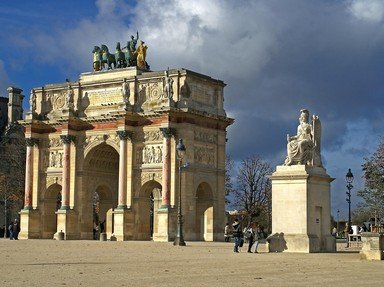Quiz Answer Key and Fun Facts
1. Napoleon was 16 when he was commissioned in the army - as a second lieutenant in the 'la fève' artillery. He successfully retook the city of Toulon, which was occupied by English troops. But his real jump in fame happened by defending off the Revolutionary forces from Royalist attack. He used a special kind of cannon-fodder, rather cruel. What was it?
2. Bonaparte's seizure of power was planned by the Abbé Sieyès - who was using Bonaparte as a pretext to gain power for himself. Bonaparte went along with this... and then seized the power for himself. The French people were happy with Bonaparte taking power because they were impressed with his military successes in a certain country. Which?
3. In January 1804, Napoleon discovered a plot to kidnap and assassinate him, financed by the British. This plot was cooked up by the Bourbons, and Napoleon arrested the Duc D'Enghien, a Bourbon, in retaliation. What did he have to do for the trial?
4. While Napoleon ran the country he made many changes, many of which are still used to this day. Which of the following is NOT a change that he made?
5. In 1803 Napoleon had a few problems with his North American settlements, he sold them to the United States of America. This is known as the Louisana Purchase. How much did he sell the land for? (1 acre = 4047 square meters approx.)
6. Napoleon was planning to invade the south of England, but he was a bit of a dummy when it came to nautical matters, and all of the naval officers that were any good had been executed in the Revolution. His fleet was once again hammered by the English fleet, commanded by Admiral Lord Nelson. This is the battle of...?
7. In 1812, Napoleon turned his gaze upon another country. This invasion turned out to be the turning of the tide in the Napoleonic wars, because Napoleon's army was pulverized - under 2% of his soldiers survived this campaign. Which country did he try to attack?
8. After several defeats Napoleon eventually abdicated, forced to by the Allies. He was exiled to the island of Elba. Eventually, he slipped away. How long did he reign for before being exiled again?
9. Famous last words : Several different sources disagree about Napoleon's famous last words - some add the name of his wife, Josephine as his final word. But apart from that, all sources pretty much agree that Napeolon's famous last words are :
10. There are two possibilities to the cause of Napoleon's death today - stomach cancer and arsenic poisoning. Which one was diagnosed by Napoleon's family's physician as the cause of death?
Source: Author
Trouble325
This quiz was reviewed by FunTrivia editor
bloomsby before going online.
Any errors found in FunTrivia content are routinely corrected through our feedback system.

